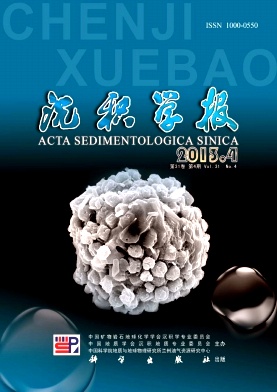Grain Size Characteristics and Its Environmental Significance of Lacustrine Sediment Recorded in Wuliangsu Lake, Inner Mongolia
- Publish Date: 2013-08-10
-
Key words:
- Wuliangsu Lake /
- lacustrine sediment /
- grain size /
- environmental change
Abstract: Based on radiocarbon dating of 210Pb, the grain size of lacustrine sediment in Wuliangsu Lake was analyzed. Comparing with historical documents, the environmental evolution under the combined effects of natural and human activities was studied in Wuliangsu Lake region, Inner Mongolia. The average content for clay (<4 μm), fine silt (4~16 μm), medium silt (16~32μm), coarse silt (32~64 μm), fine sand (>64 μm), is 28.7%, 34.4%, 17.3%, 14.1%, 5.5%, respectively. Through the correlation analysis of different grain size contents, the grain size characteristic changed significantly around 1965 AD in Wuliangsu Lake. Based on this result, with the method of grain size vs. standard deviation, the sediment sources were extracted in the two stages before and after 1965AD. The results show that: the sources of lake sediment are composed of materials from Yellow River and topsoil erosion in Hetao irrigation. But in the tow stages, the grain size characteristics of different populations in lake sediment have obvious differences. Before 1965 AD, the fine grainsize populations (<19.95 μm) are from the topsoil erosion in Hetao irrigation, and the other coarse grain-size populations (19.95~181.97 μm) are carried by Yellow River, which dominated grain size characteristic of the whole Wuliangsu lake sediment. After 1965 AD, the gain size of the fine and coarse population are <5.71 μm and 5.71~60.56 μm, respectively, but the fine grain-size one dominated the lake sediment characteristic, which are consistent with runoff of the main drainage canal in Hetao Plain. Overall, since the 1960s, lake sediments in Wuliangsu were mostly imposed by human influence, which has exceeded the natural role.
| Citation: | Grain Size Characteristics and Its Environmental Significance of Lacustrine Sediment Recorded in Wuliangsu Lake, Inner Mongolia[J]. Acta Sedimentologica Sinica, 2013, 31(04): 646-652. |






 DownLoad:
DownLoad: